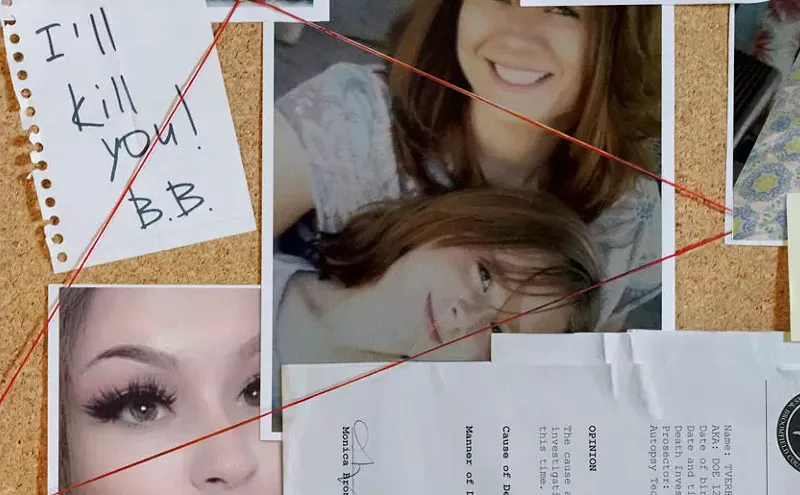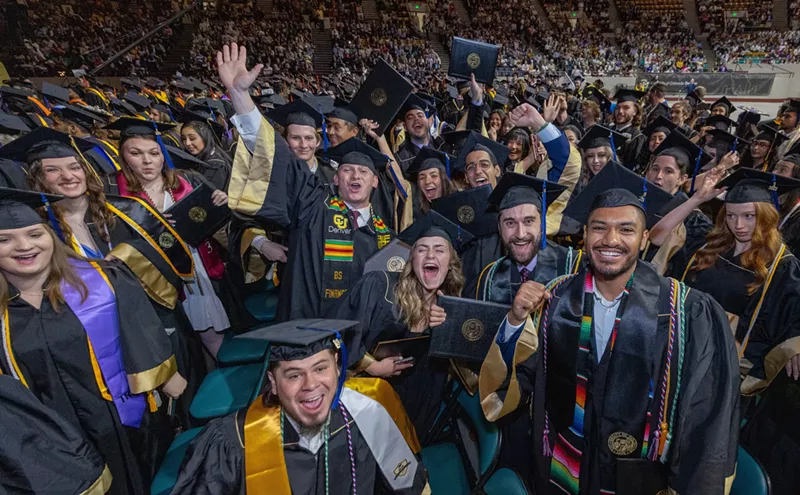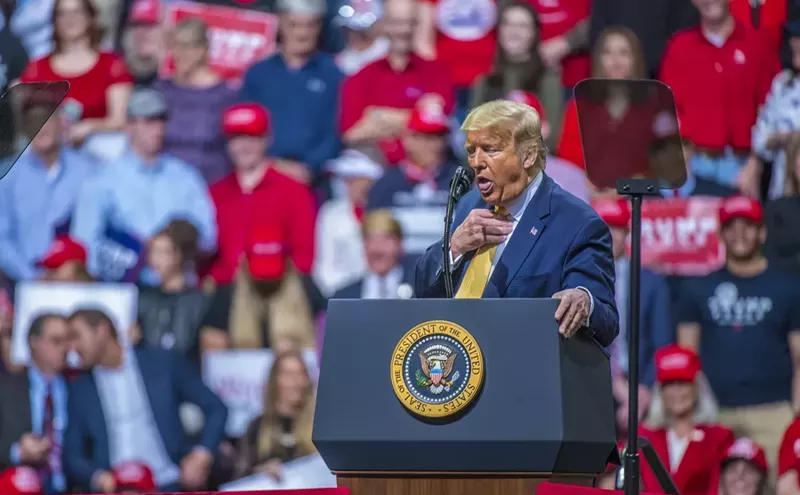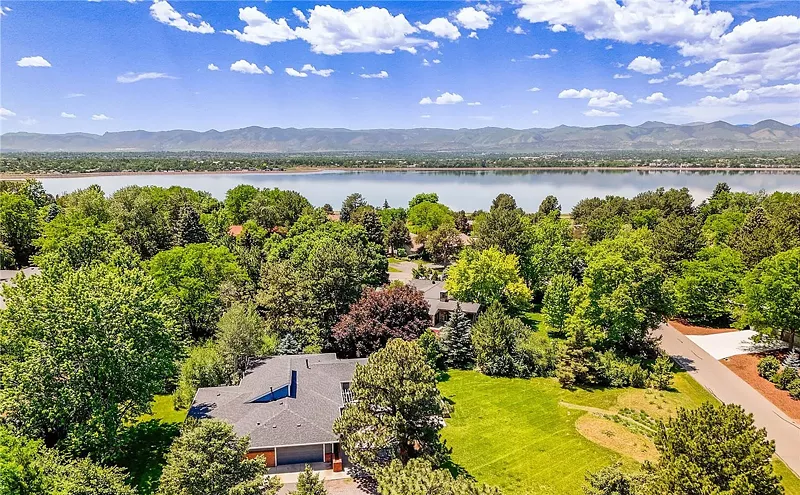"It's like a slap in the face," says a source close to the museum who asked to remain anonymous. "That either means the museum didn't do its homework or, if it did, it's even more of an insult."
More than 1,000 Peruvians are suing Newmont Mining over the mercury spill. And in 2002, a French businessman filed a lawsuit claiming that Newmont and a Peruvian mining company bribed local judges in order to acquire the Yanacocha mine. The lawsuit was dismissed from U.S. District Court in Denver last month after Judge Richard Matsch determined that the federal court does not have jurisdiction in the case. Concerned by the allegations, Boston Common Asset Management, a social-investment firm that holds 3,100 shares of Newmont stock, filed a shareholder resolution seeking details about the company's human- and environmental-rights records; that resolution is scheduled for a vote at Newmont's annual meeting in March.
DMNS spokeswoman Julia Taylor met with Newmont representatives and spoke with them about their Peruvian operations; she says they "seemed to genuinely have an appreciation for world cultures." This isn't the first time the global gold giant -- which also operates mines in Australia, Indonesia, Mexico, Canada and, soon, Ghana -- has donated to the museum. Since 1990, Newmont Mining has given the DMNS $73,000, including the $25,000 donation for Machu Picchu: Unveiling the Mystery of the Incas, which opens this week. That gift will help fund educational programs related to the ancient ruins, which sit more than 400 miles southeast of Newmont's Yanacocha mine. Newmont has also contributed to the museum's geological collections and to its Space Odyssey exhibit. "We've been really thankful for their support," Taylor says.
"One of the things we try to do is promote cultural understanding of the areas in the world where we operate. We're one of the largest taxpayers in Peru. We've been there ten years, and we'll probably be there another twenty. It's a culture we're invested in," says Newmont Mining spokesman Doug Hock.
It's an investment that has reaped handsome returns. The Yanacocha mine yielded a record 2.29 million ounces of gold in 2002, contributing to the company's $2.6 billion in gold sales that year; meanwhile, 75 percent of Cajamarca's residents live in poverty. "Yes, there are impacts to what we do, and the [mercury] incident was very unfortunate. That doesn't mean we're not very proud of our Peruvian employees," Hock says, adding that Newmont Mining spent upwards of $14 million to clean up the mercury spill and to treat the town's inhabitants.
"I find it ironic that Newmont would offer to sponsor an exhibit on Peru, but I'm even more surprised and disappointed in the DMNS administration for accepting support from a company like that," says José Aguayo, who sits on the board of trustees for Denver's Museo de las Américas. That museum, which narrowly avoided foreclosure last April, is running its own exhibit, Colorful Cuadros: Stitching Stories of Peruvian Life, which features textiles created by Peruvian women who have been displaced from their homes because of terrorism.
"I know times are tough for museums, so I suppose they need the money," Aguayo continues. "Still, I think museums have some kind of responsibility to their audience to be honest about the people backing their exhibits."
Payal Sampat, international campaign director for the Mineral Policy Center, a Washington, D.C.-based environmental nonprofit, agrees. "It's certainly ironic that Newmont is sponsoring an exhibit on Peru's ancient treasures at the same time as the company shows its disregard for Peru's living treasures -- its people and environment," she says. "Newmont is trying to expand its Yanacocha mine in northern Peru to the mountain of Cerro Quilish, which is a protected area and the principal drinking-water source for the region's residents, who protest this expansion."
The museum source who spoke with Westword believes the problem at the DMNS runs deeper than just one exhibit, however. The bigger issue is inadequate representation of Latino cultures in the museum's offerings and workforce. In an e-mail letter to the museum, written under the name "Concerned Chicano," the source pointed out that "in adding the new space science exhibit to the museum, [the museum] has removed the only exhibit that even referenced Latino/Hispanic cultures."
Concerned Chicano was citing The Hall of Ancient People, which was closed to make way for Space Odyssey. The $50 million permanent exhibit, which opened in June 2003, led to the resignation of numerous museum employees, who felt that the 104-year-old institution was focusing on its interactive new space offering at the expense of traditional natural-history projects. And at a time when funding for arts and science programs is hurting, some employees wonder whether the expensive space program will be able to sustain itself ("A Spaced Odyssey," September 19, 2002).
DMNS President and CEO Raylene Decatur, who recently announced plans to leave the museum in March to spend more time with her kids, responded to Concerned Chicano's claims by citing various museum efforts to reach out to the Latino community, such as programs targeted at at-risk kids and science classes offered in Spanish. She concluded her e-mail by saying that "employment at the Denver Museum of Nature & Science is just as diverse as our many exhibits. Nearly 30 percent of the employees here identify themselves as Hispanic, Native American, Asian, Black or another race."
Concerned Chicano fired back, "Your statistic of 30 percent of the museum employees identifying themselves as of color or culture failed to mention that of the 30 percent, 98.9 percent work in the service side of the museum."
In fact, the lead museum staff member on Machu Picchu is not Latina, though her co-curator at Yale University, which is sponsoring the traveling exhibit, is Peruvian. The DMNS also collaborated on the exhibit with Marita Landaveri-Porturas, the consul general of Peru in Denver.
"[Newmont] does a lot of work on cultural things like this, and we're happy they do," says Landaveri-Porturas. "Because of their support and help from other corporations, we were able to bring the exhibit here. Any spill is terrible, but they have worked very closely with the community, and I hear the cleanup is going very well."
The museum will run ads for the exhibit on the Univision network as well as in Latino newspapers, and it also will serve Peruvian food and drinks in its cafeteria and carry Peruvian books in its gift shop. "We'll have at least one bilingual volunteer or staff member available during the exhibit to translate, and we'll have a guide written in Spanish," Taylor adds.
Concerned Chicano is well aware of those plans but says they are a marketing ploy to attract more visitors rather than a real attempt at outreach. "They don't look at my people as a culture, but as numbers, as dollars coming in the door." The concerned source says that the fact that a mining company is sponsoring the museum's first major Latin American exhibit since 1991's AZTEC is even more disheartening.
And this probably won't be the last time Newmont donates to the museum. "We're the largest employer of indigenous people in Australia, so if they ever do an exhibit on Australia," Hock says, "we'd be interested in working with them."












